
- Accueil
- Format
- Matière
- Bois (4)
- Bronze (2552)
- Bronze + Marbre (35)
- Bronze / Marbre (40)
- Bronze Argenté (5)
- Bronze Doré (8)
- Bronze Et Marbre (19)
- Bronze Massif (275)
- Bronze Sur Marbre (4)
- Bronze, Pierre (4)
- Fonte D'art (11)
- Laiton (3)
- Marbre (12)
- Métal (35)
- Métal Et Marbre (4)
- Plâtre (8)
- Regule (11)
- Régule (7)
- Résine / Bronze (18)
- Terre Cuite (8)
- Autre (1053)
- Pays D'origine
- Région
- Signée
- Type
- Bougeoir (4)
- Bronze (5)
- Cendrier (4)
- Coulée De Bronze (4)
- Decoration (4)
- Figurine (6)
- Figurine, Statue (83)
- Garniture Cheminee (4)
- Lampe De Table (9)
- Lustre (3)
- Moulage En Bronze (8)
- Pendule à Poser (13)
- Pied Lampe Sculpture (6)
- Sculpture (1981)
- Sculpture, Statue (4)
- Serre Livres (4)
- Statue (228)
- Statue De Bronze (14)
- Statue Sculpture (524)
- Statue, Sculpture (332)
- Autre (876)
Bronze Arts Déco Susse Frères P. Sylvestre
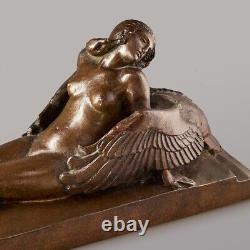
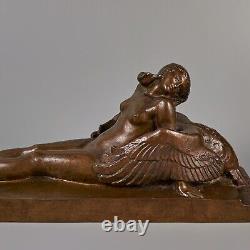
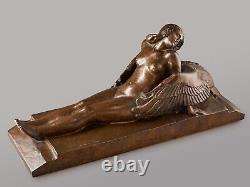
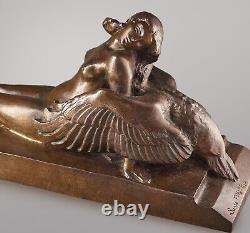
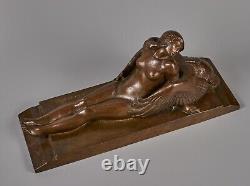
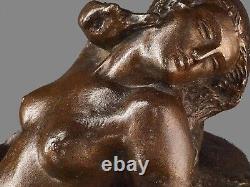
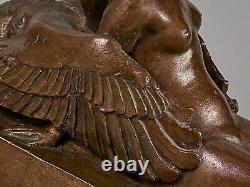
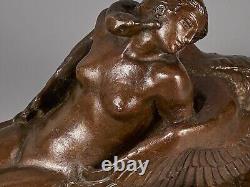
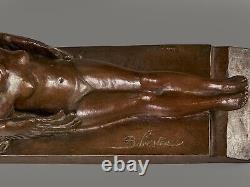
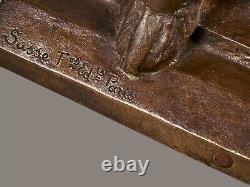
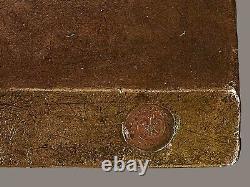


Superbe, sensuelle et mystérieuse ouvre dont le thèmes est issu de la mythologie grecque : selon Homère, Zeus prit la forme d'un cygne pour séduire Léda la nuit. L'ouvre est une grande réussite tant elle fait ressortir l'aspect enchanteur et féerique de la belle envoutée par l'énigmatique volatil! Sculpteur français récompensé par le deuxième second grand prix ainsi que par le prix Desprez, puis par le premier second grand prix de Rome en 1912. Il expose régulièrement dès 1921 au Salon des artistes français, où il obtient une médaille d'or en 1930. Sociétaire hors-concours de la Société des artistes français, il reçoit un diplôme d'honneur pour l'Exposition internationale des Arts et Techniques de 1937 à Paris pour ses quatre stèles ornant la façade du pavillon Languedoc-Pyrénées. Il est nommé chevalier de la Légion d'honneur en 1906. La fonte sur plâtre (inscription sur la sculpture) de ce bronze lui confère un caractère brut, saisissant de vitalité. La fonte est légère -avec la stricte quantité de métal nécessaire au moulage- un gage de qualité exceptionnelle. Elle a été réalisée dans les ateliers Susse Frères (signature et cachet). La patine médaille est d'un très bel aspect, elle donne beaucoup d'authenticité à la pièce. H 17 - L 39 - P 13 cm.
Vous aurez ce que vous voyez en photos. Envoi dans le monde - hors Union Européenne me consulter. Superb, sensual and mysterious work whose themes come from Greek mythology: according to Homer, Zeus took the form of a swan to seduce Leda at night.
French sculptor awarded the second second grand prize as well as the Desprez prize, then the first second grand prize in Rome in 1912. He exhibited regularly from 1921 at the Salon of French Artists, where he won a gold medal in 1930. A non-competitive member of the Society of French Artists, he received an honorary diploma for the International Exhibition of Arts and Techniques of 1937 in Paris for its four steles adorning the facade of the Languedoc-Pyrénées pavilion. He was named Knight of the Legion of Honor in 1906.The casting on plaster (inscription on the sculpture) of this bronze gives it a raw character, strikingly vital. Cast iron is light - with the strict quantity of metal necessary for casting - a guarantee of exceptional quality.
It was made in the Susse Frères workshops (signature and stamp). The medal patina has a very beautiful appearance, it gives a lot of authenticity to the piece.

